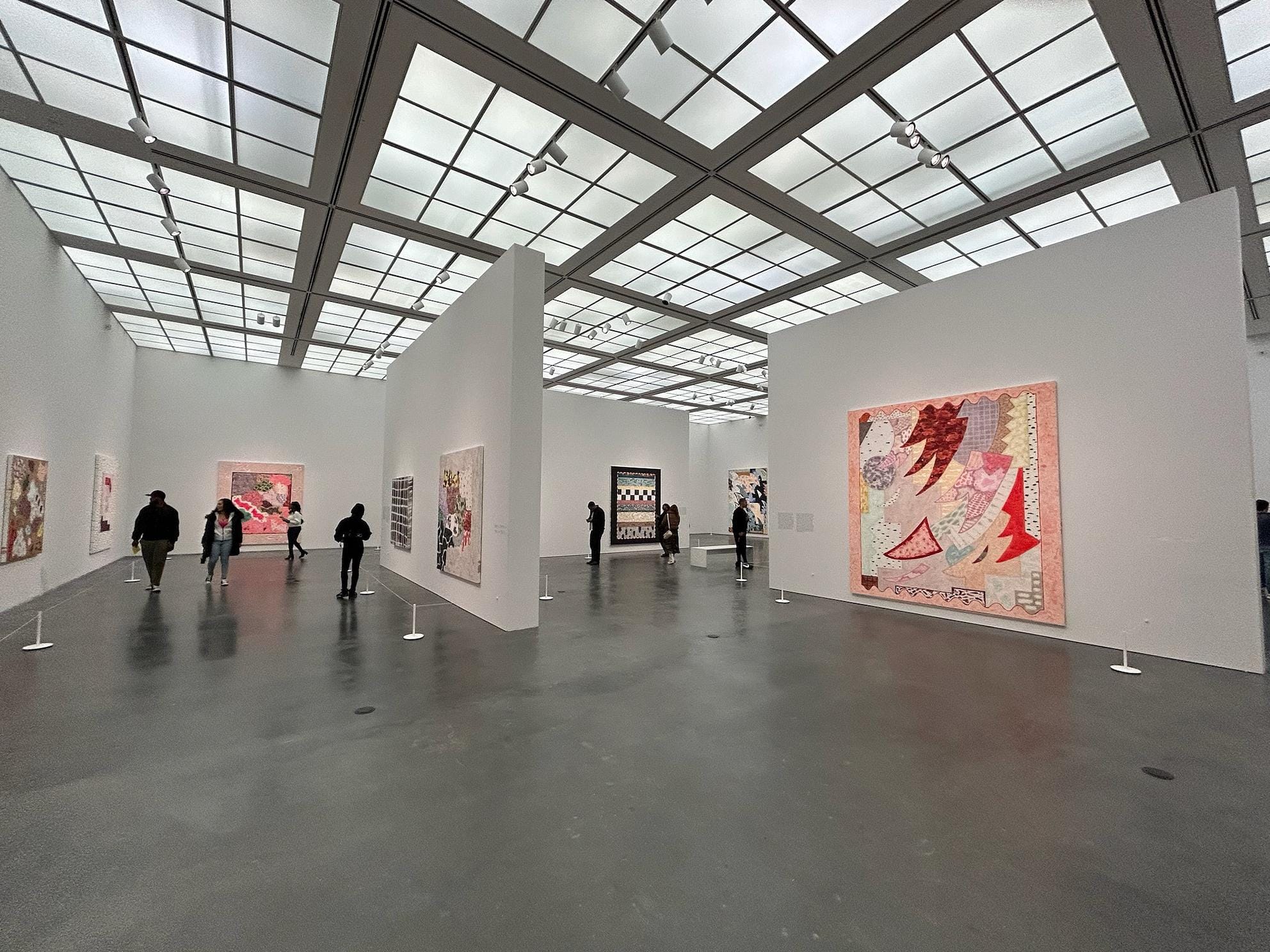Rebecca Morris: 2001 – 2022
Museum of Contemporary Art
Chicago, Illinois
Through April 7, 2024
It feels strange to consider that coming out of the 1990s, painting was the pariah of art media. Following a formidable midcentury explosion of abstract expressionism, many of the early 20th century’s more esoteric ideas boiled back to the surface of the art world, resulting in pop art, fluxus, conceptual art, the proliferation of video and performance art. However, by the 1980s, painting was a dinosaur. The few ubiquitous painters of the decade — Basquiat and Haring — started as “street artists,” painting against the gallery, not in it. But it was out of these ashes that new life, like Rebecca Morris’s 21-year retrospective at the Museum of Contemporary Art in Chicago, arose.
Morris’s works take the scraps of the doctor’s‑office, Greyhound bus-seat late ’80s abstraction and pull it into a post-Basquiat color palate with the vague visual references that, for the past two decades, have pervaded the already-inundated human psyche. One such painting, Untitled (#10 – 20), features a brilliant deep blue background punctuated by what looks like the cosmic dust of memories, irregular patches of color and texture over the thick brush strokes creating the almost oceanic backdrop. It punctuates the room with its saturation.
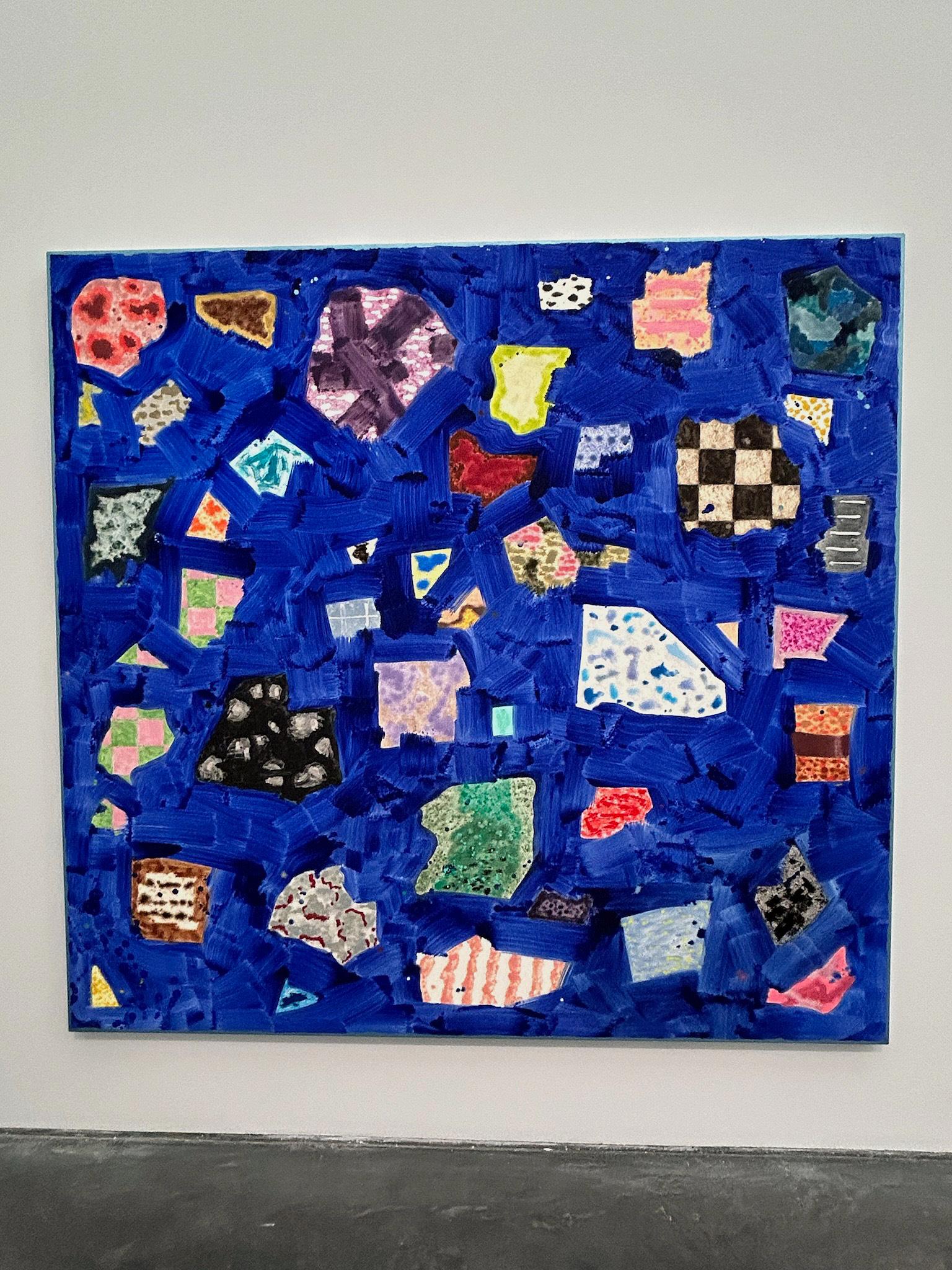
The exhibit quite literally draws you in: We encountered it en route to a different exhibit and, like moths to a flame, found ourselves drawn to the bold shapes and large-scale canvases that stood sentinel near the archway of the exhibit entrance, inviting the passerby to contemplate the organic and inorganic, the linear and the blobby, the bold color palette and the more tranquil pastels. The first visible canvas, Untitled (#03 – 18), is a fiery red, with splotches beneath the surface depicting both inorganic motifs like a checkerboard and more fluid-feeling sections that defy any attempts at definition. Glimpses of more canvases to come beckon as one stares into the gallery, and one cannot help but walk into the parallel universe of a gallery of abstract art.
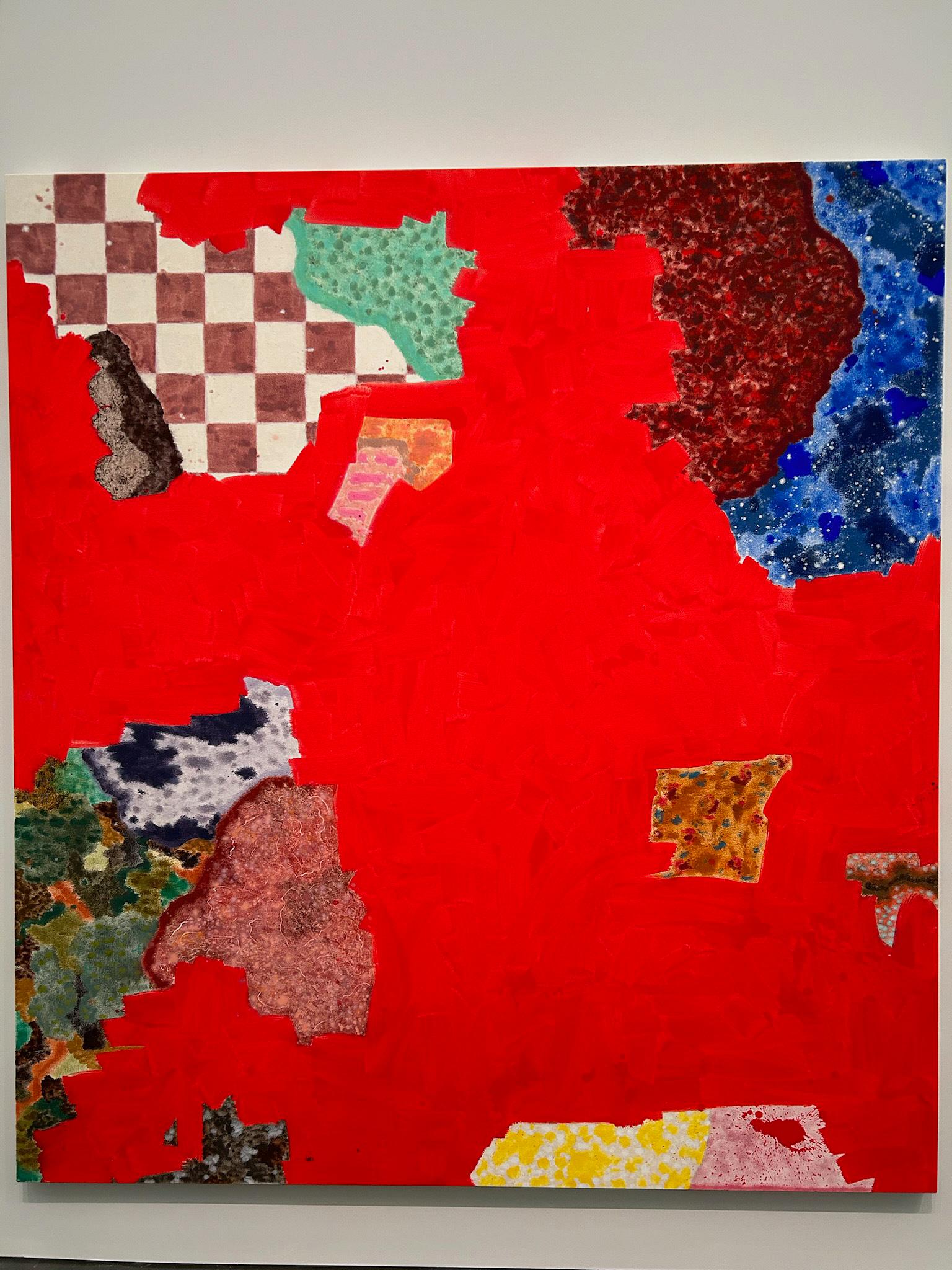
Another work, Untitled (#09 – 13), evokes a city grid with spray paint, a 2‑D iteration of the urban form, with smaller windows into subdivided spaces that bring to mind buildings, or an Andy Warhol-esque banana in the corner: very New York in its feeling. While there are no buildings, there’s the chaos amid measured place that is essential to the urban existence: we all occupy tiny windows in the big buildings of the city, which then form another, larger grid of their own. There is comfort in understanding one’s own place in this scale.
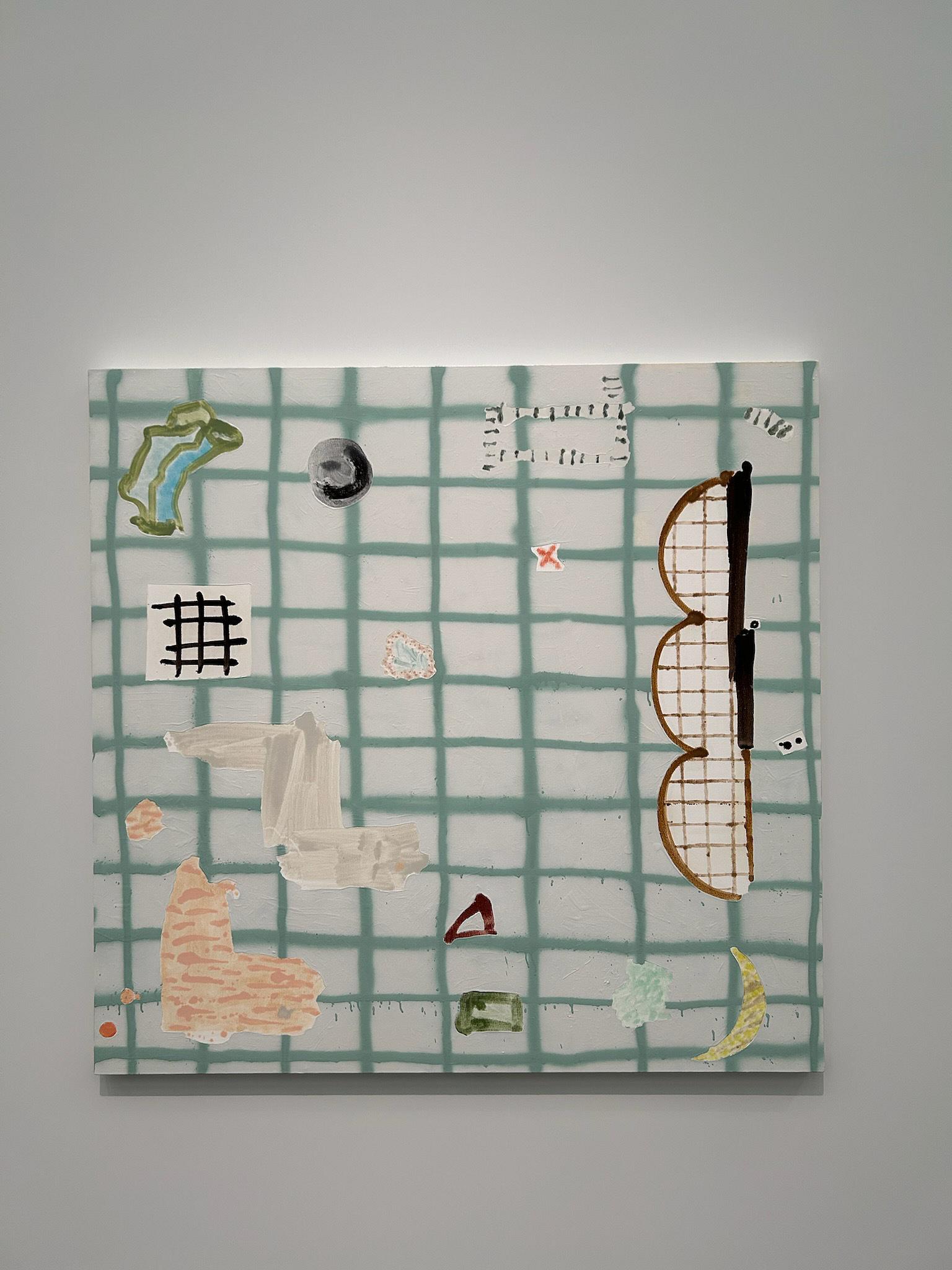
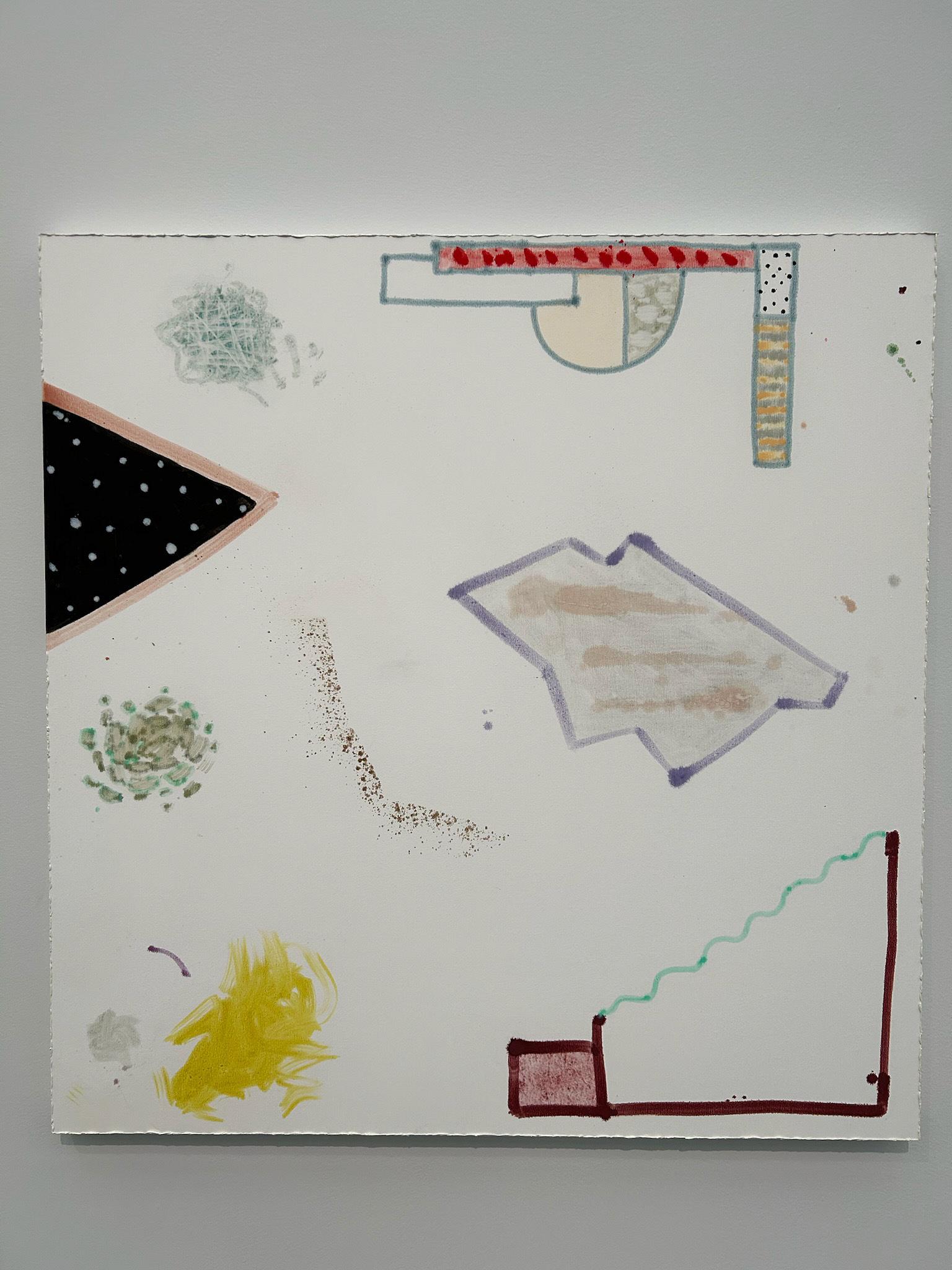
Another untitled work in a similar palette makes an argument between two dimensional and three dimensional space, using ample white space to create depth and tension between the abstract elements that float within it. Of note is a dark triangle that feels like a chunk cut out to reveal the cosmos within, the black of the triangle punctuated with celestial dots. Ultimate depth. The conversation between inorganic and organic imagery moves energy and chaos to order, or perhaps vice versa.
To wander around the gallery of large-scale abstract paintings is to activate a different part of the brain than navigating the rest of the museum. There is nothing allegorical or symbolic here. One must engage on a deeper level with the play of line, shape, and color to derive a sense of what each piece of art elicits. Fellow travelers in the gallery stood at length in front of Morris’s paintings, slowly and mindfully peeling back the portions of the human brain evolved to recognize patterns and make meaning. The sizes of the canvases begged careful inspection; many leaned close (but not too close) to examine a detail, as if a small splotch or crosshatch could make the whole thing legible. The expansive first floor gallery at the Museum of Contemporary Art, with its high ceiling and airy light diffusion, felt an apt home for such powerful works of saturated color.
